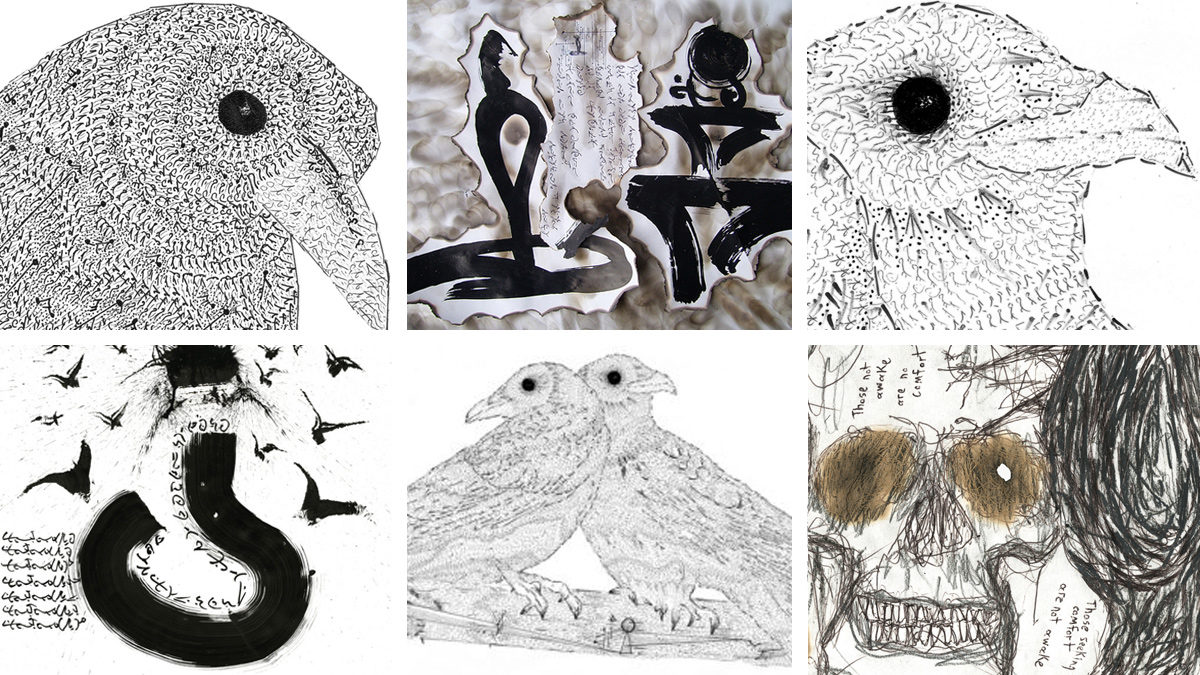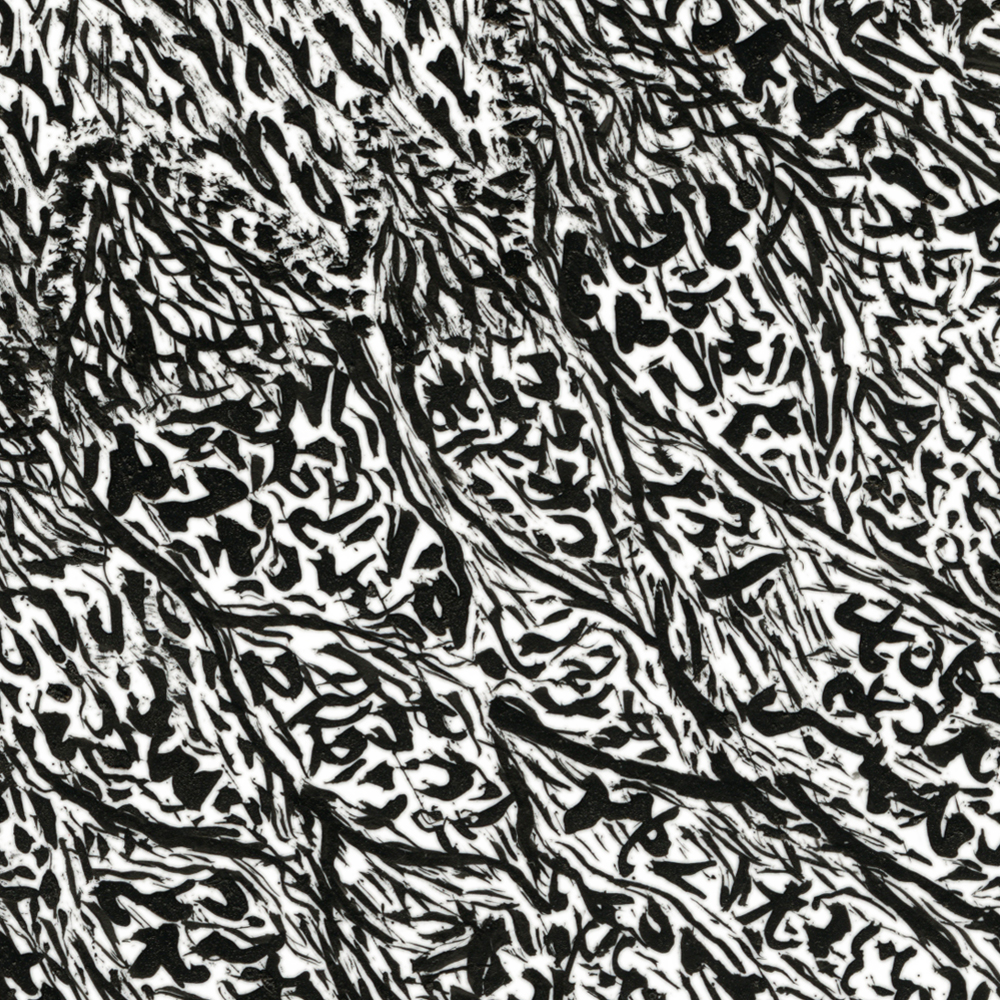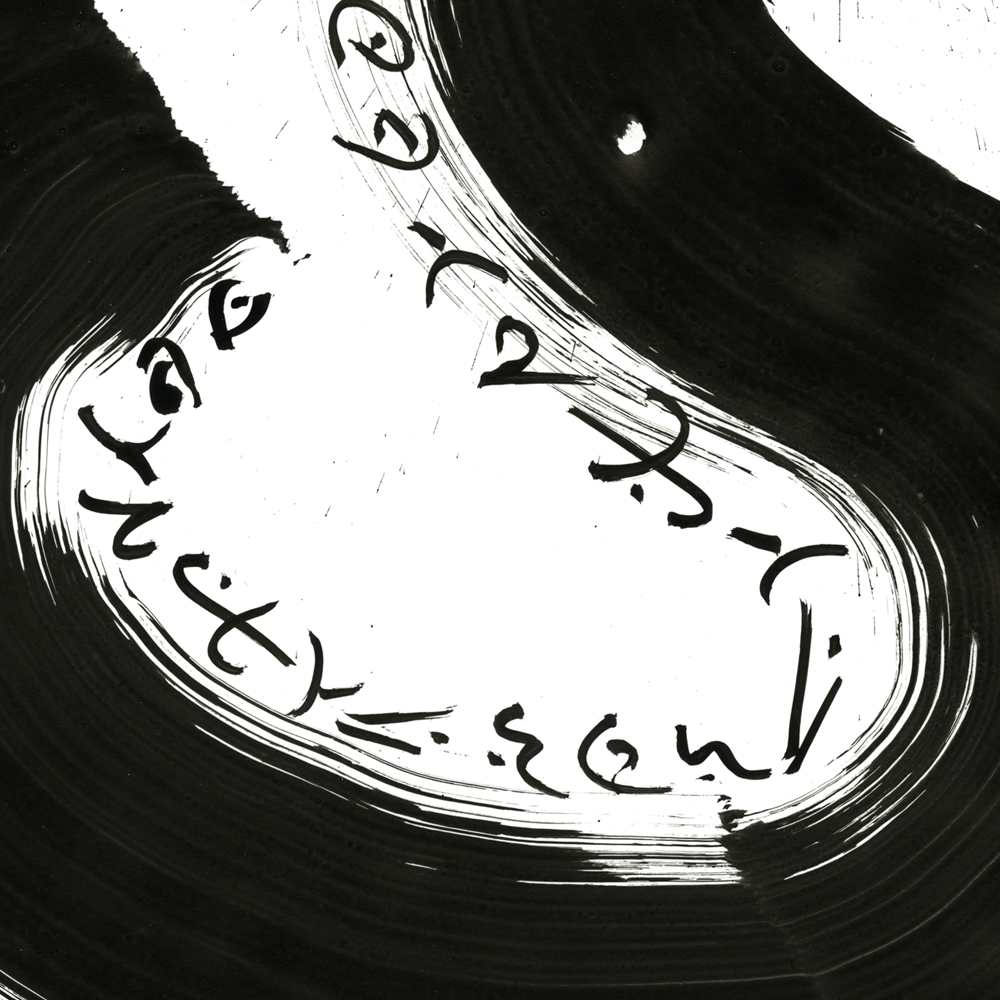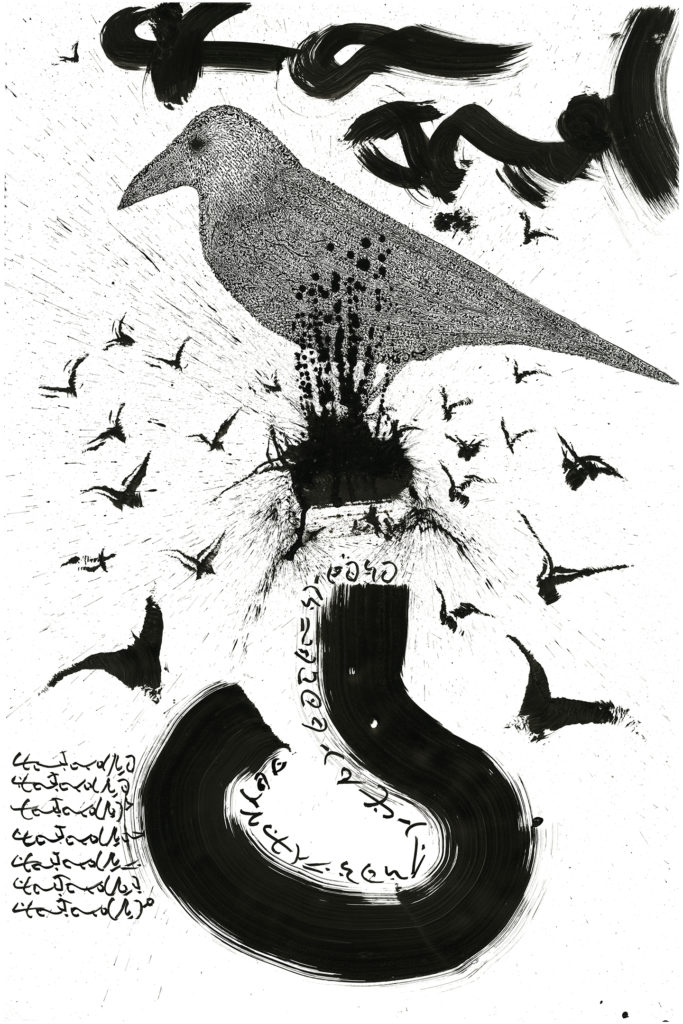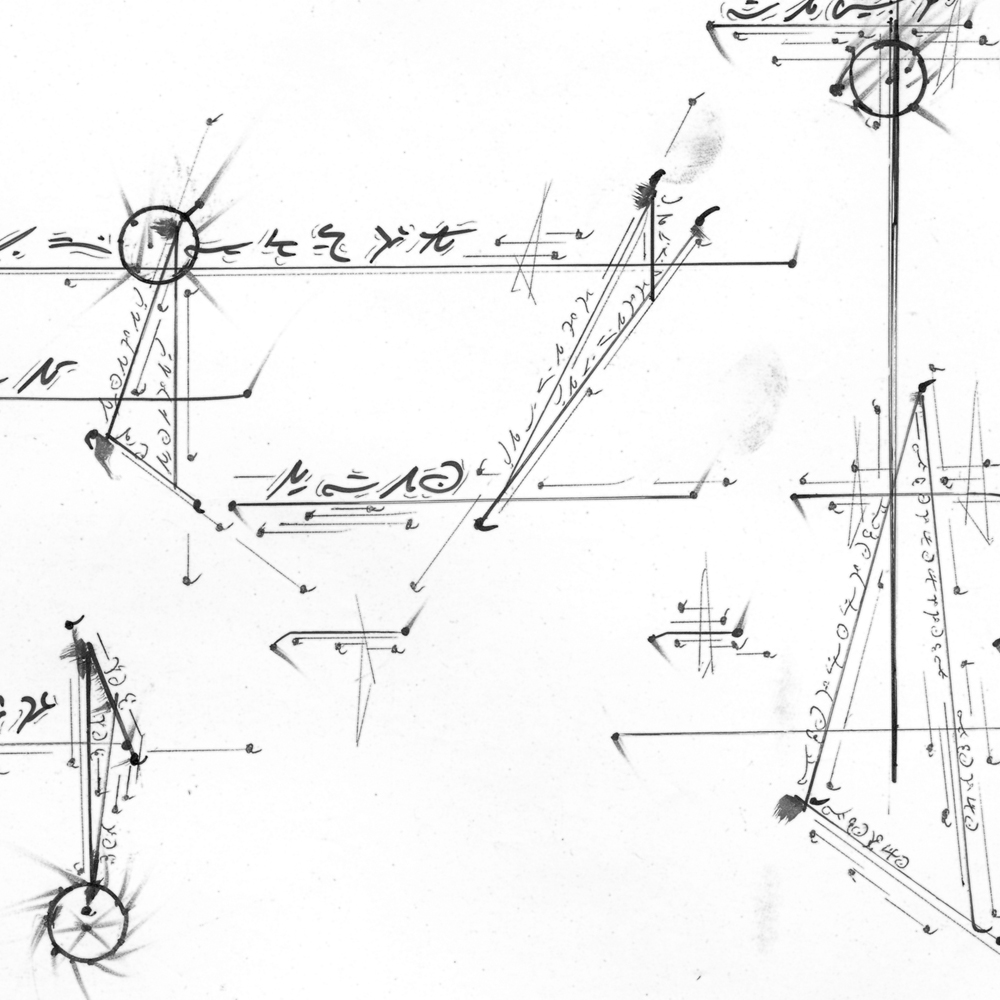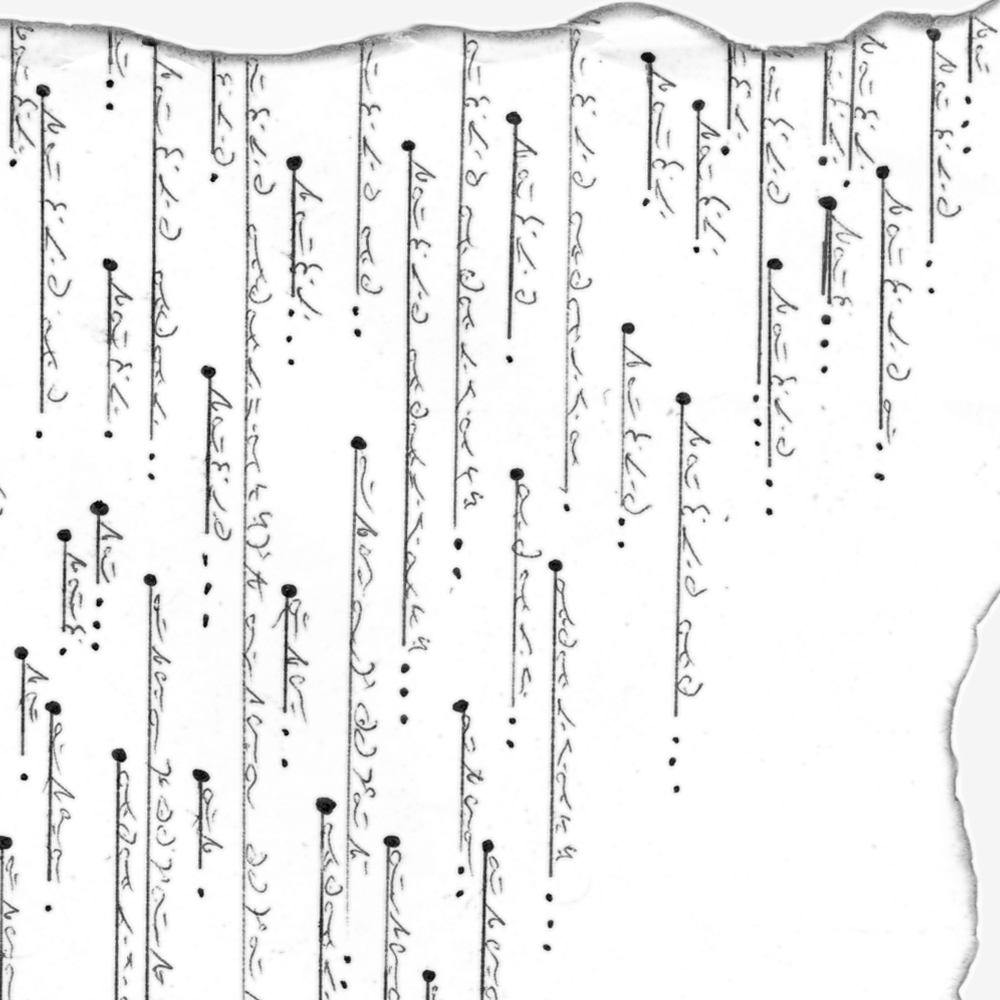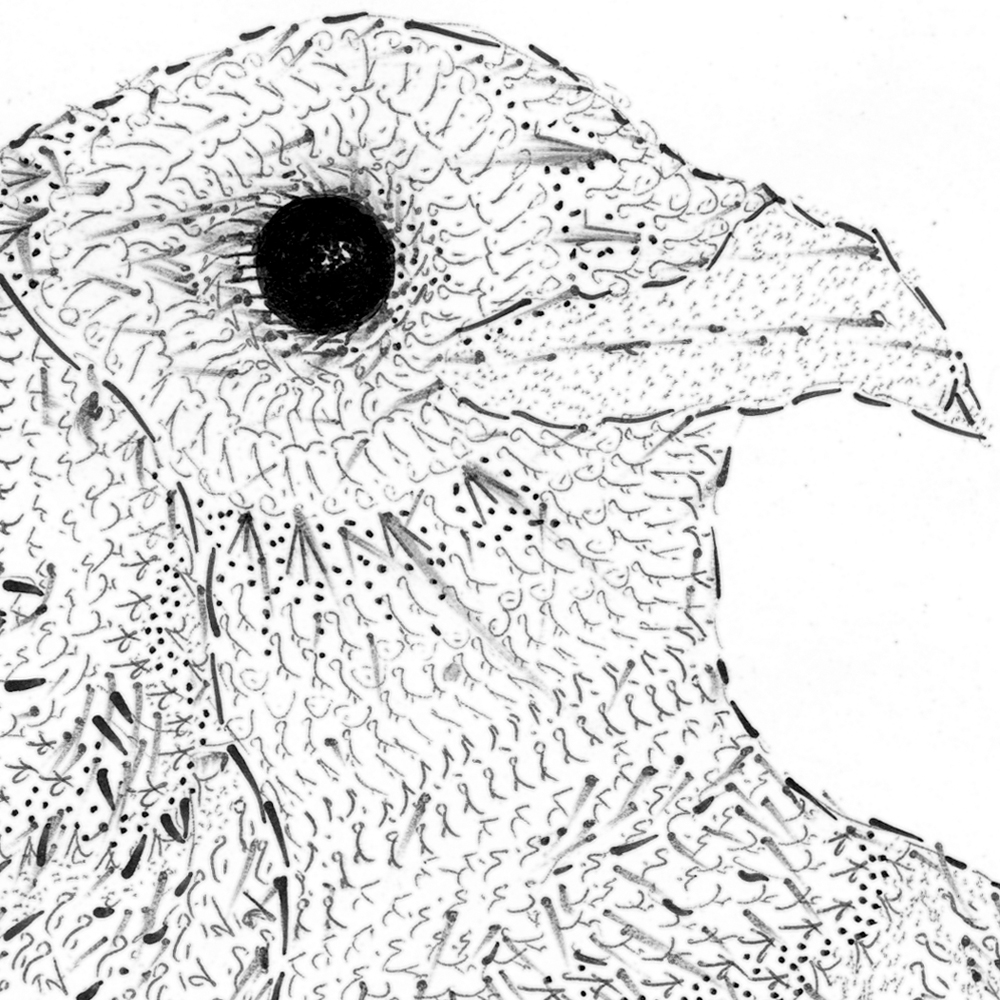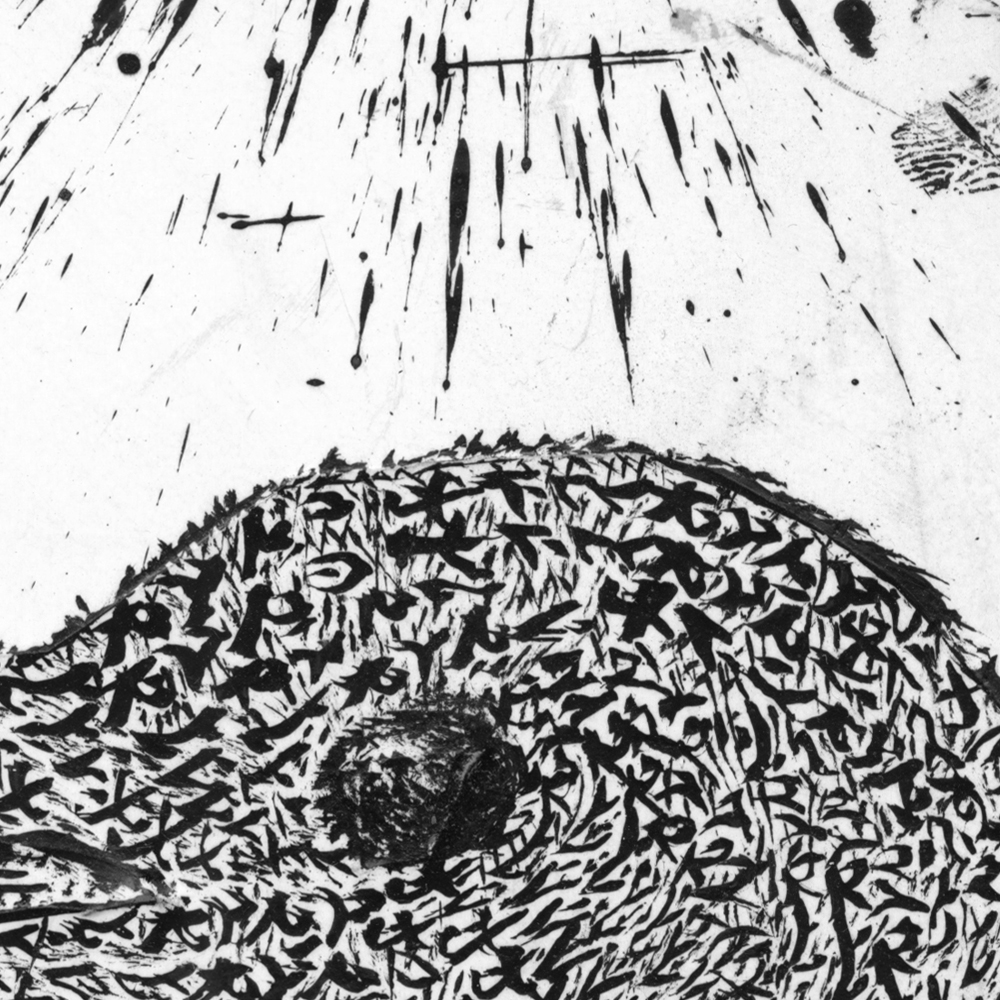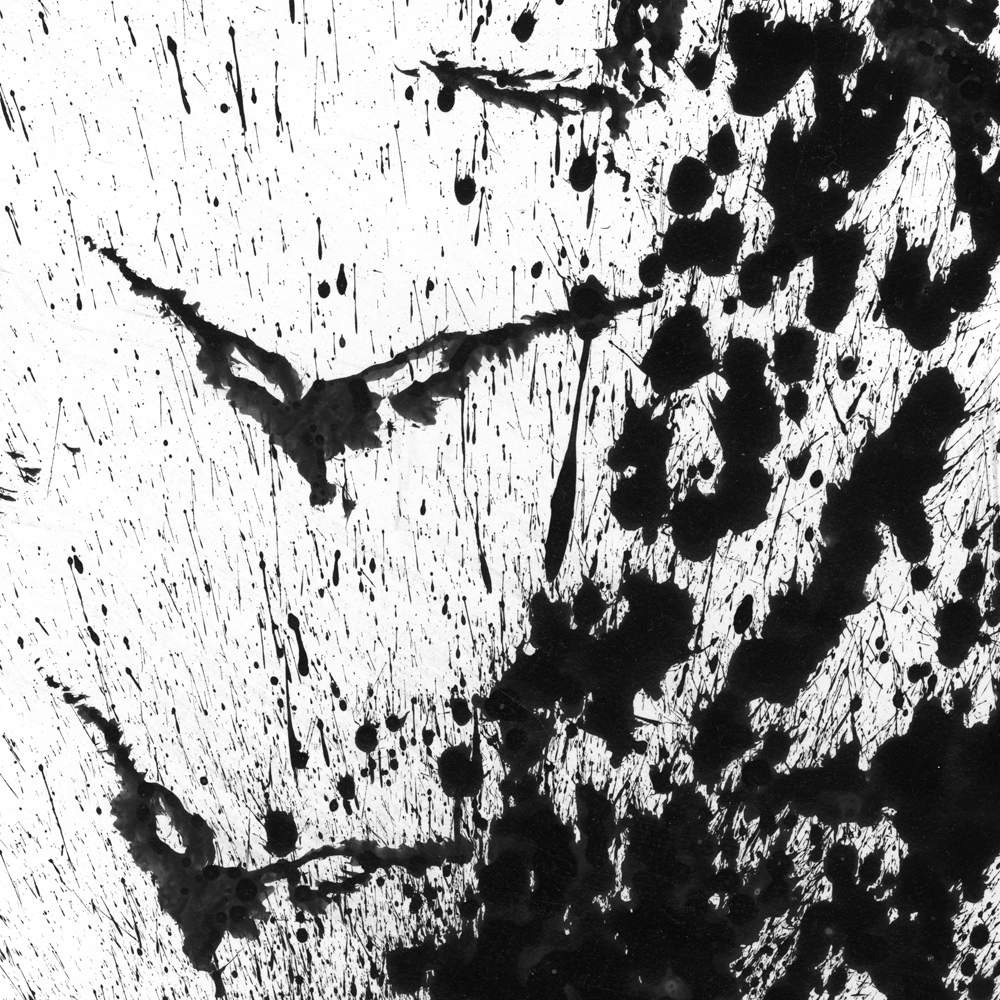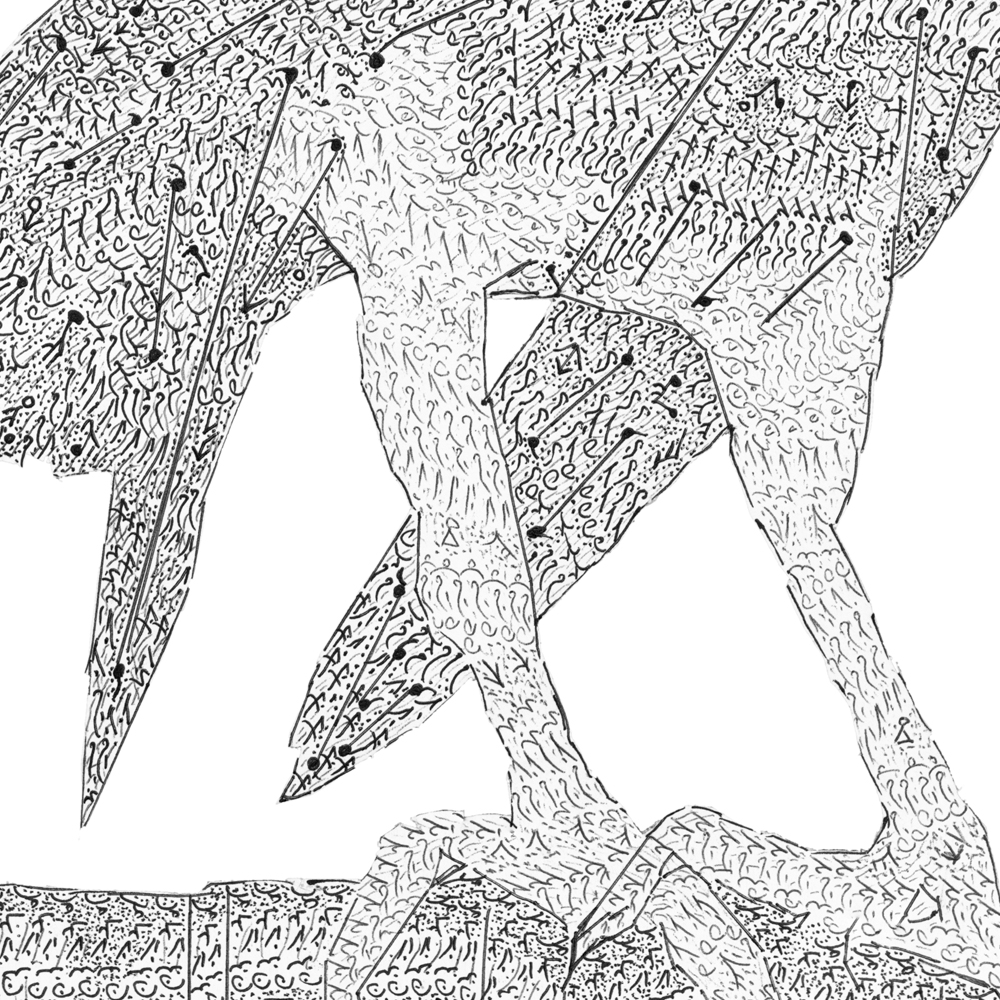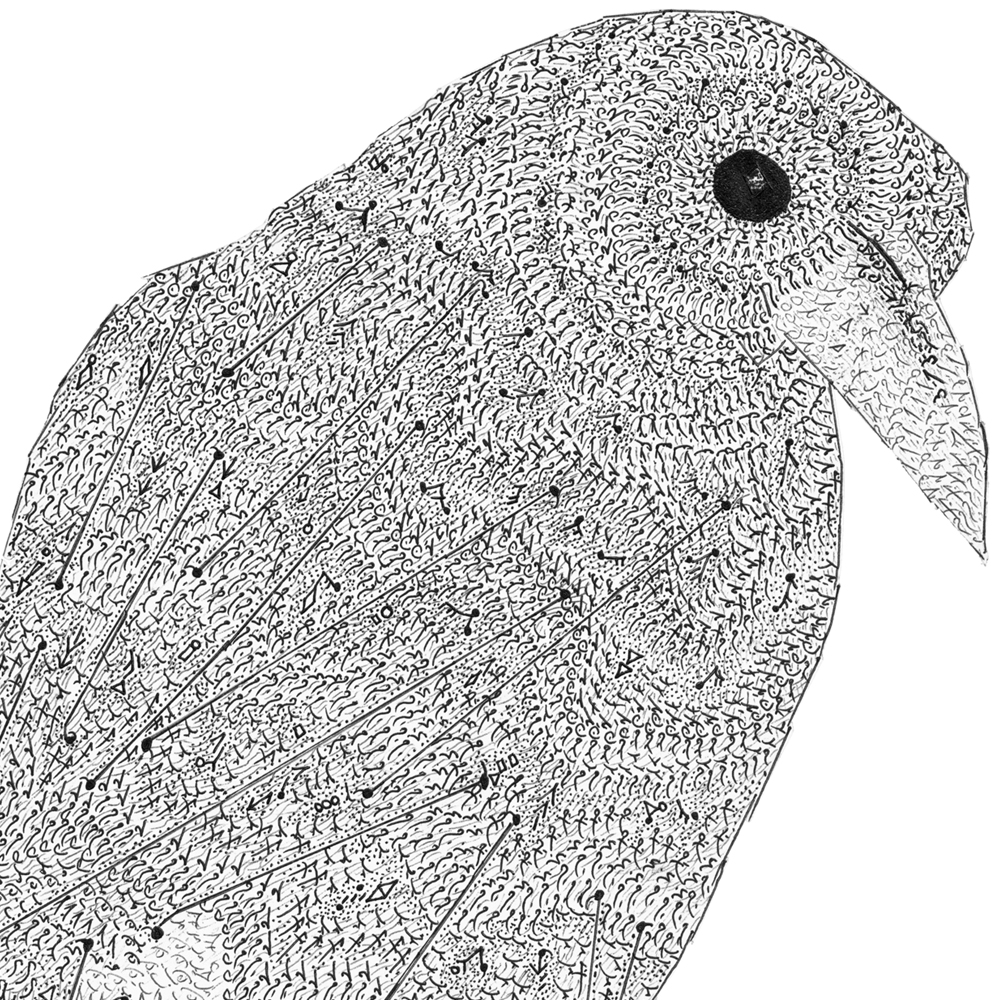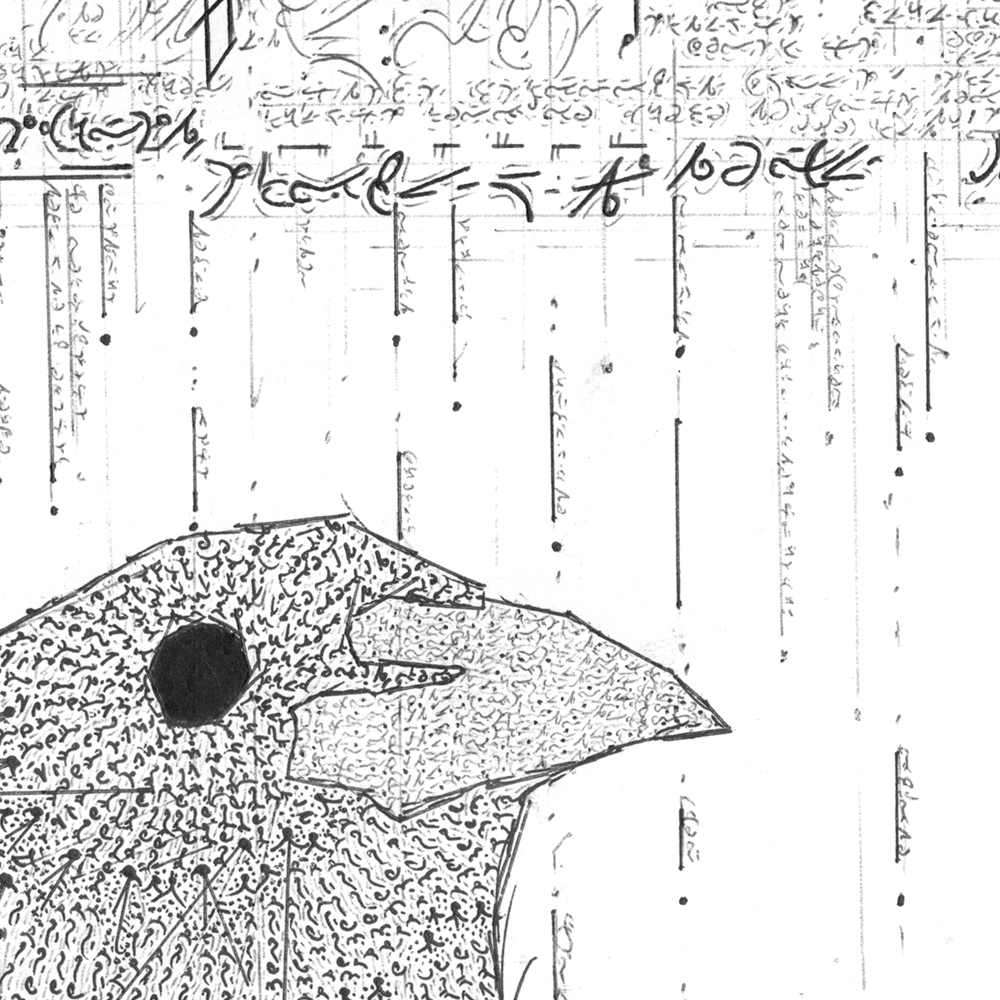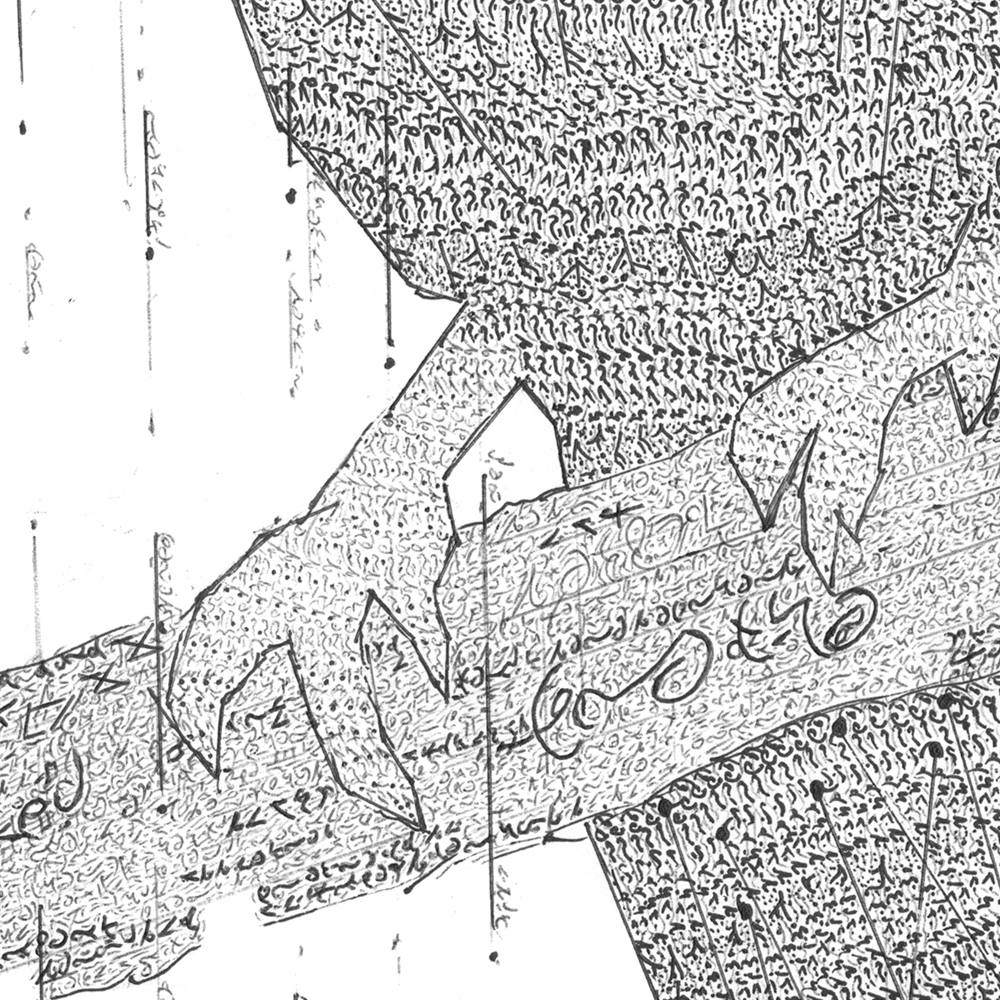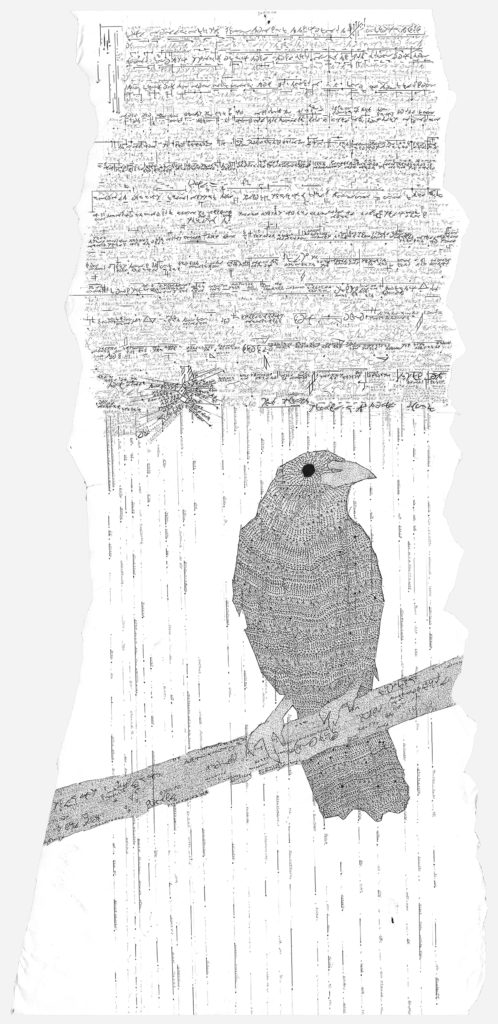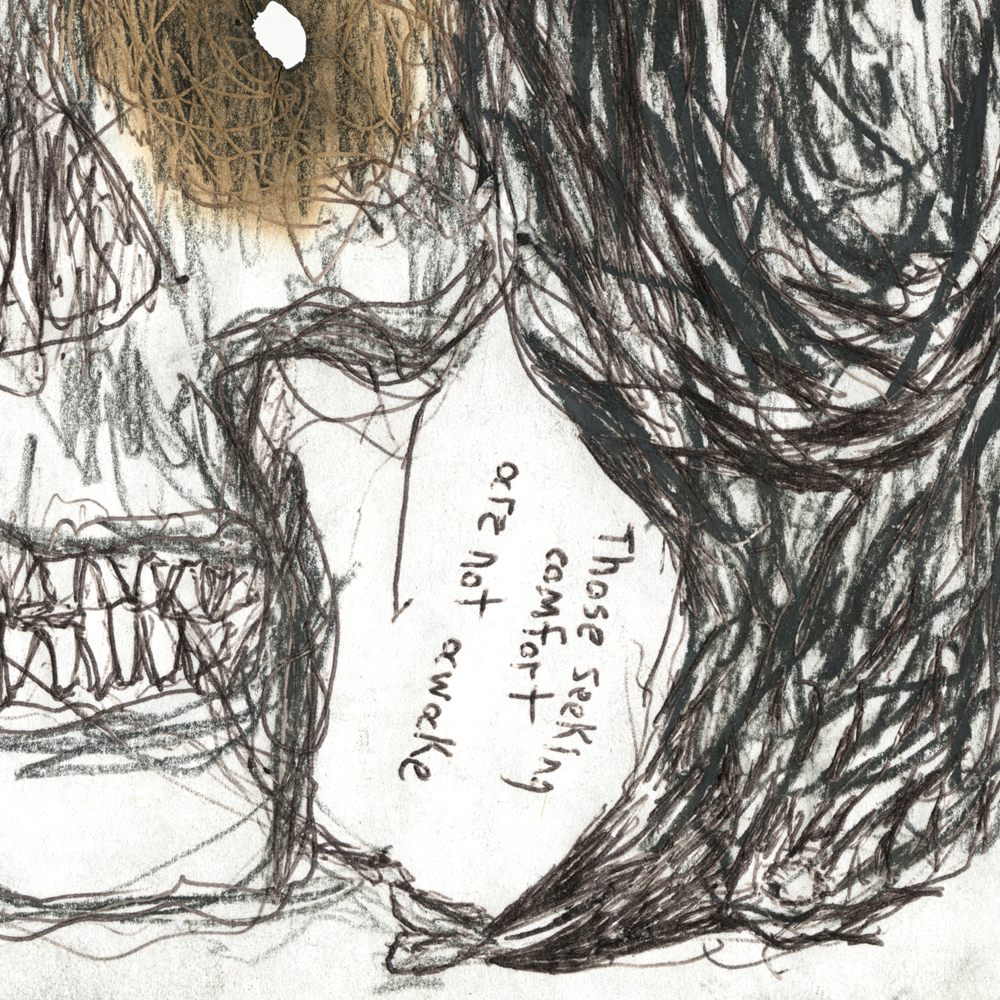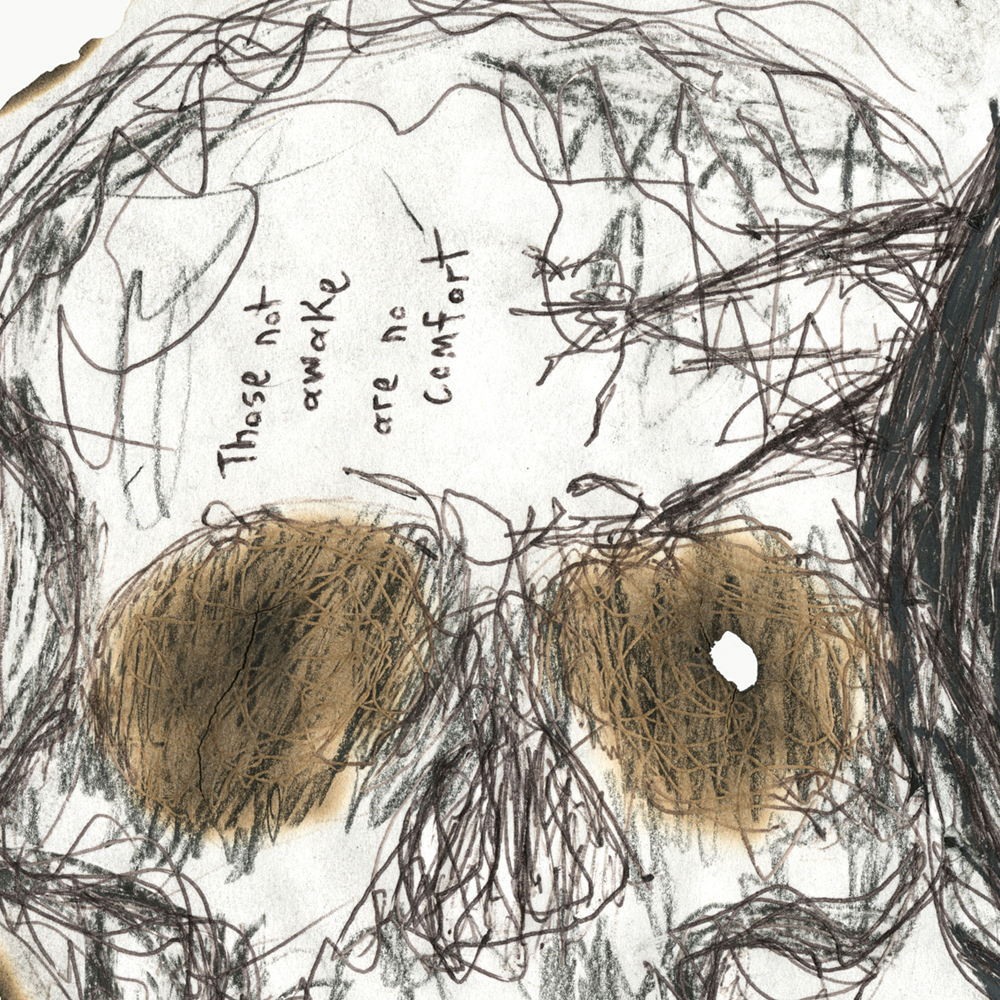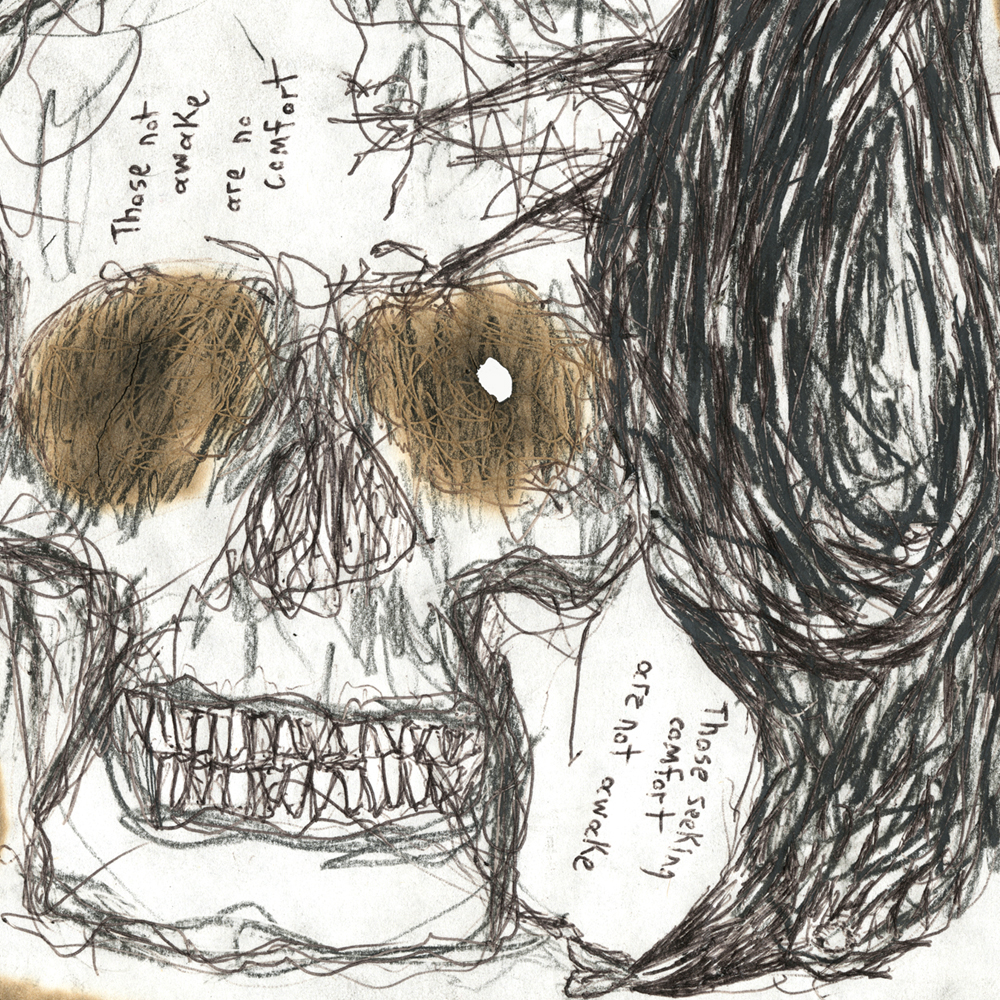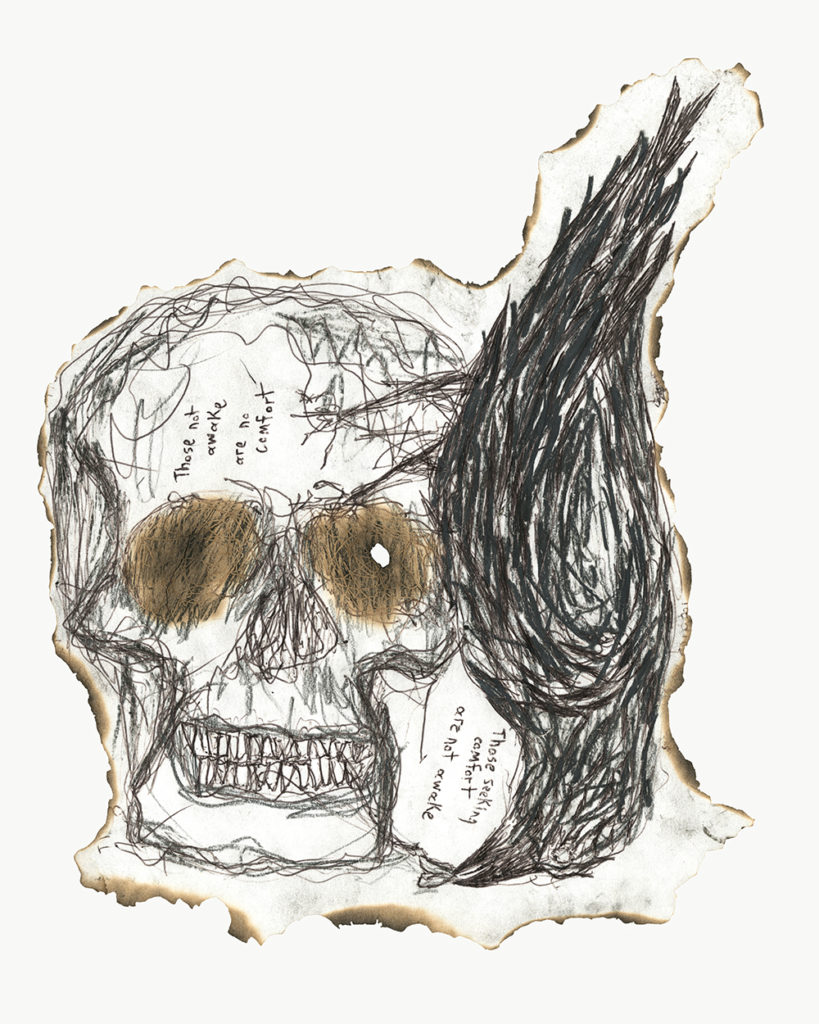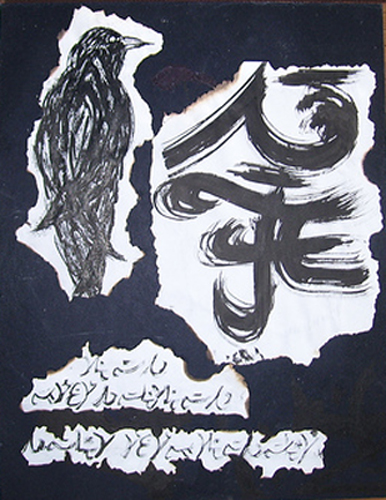Integral East-West
“Stuart Davis’ paintings honor Eastern Zen influences while using a maverick Western approach. These works feature a unique form of micro-calligraphy in Stuart’s own constructed language, called “IS” (a present-tense infinite Verb). Stuart has been engineering this language for years, which employs innovative forms of syntax and semantics. Stu considers it an experiment in perspectives, but it’s also the focal point in his numerous paintings. Alternating between fire and paint, he creates crows and Buddhas inscribed with hyper-detailed phrases and poems in his language” (from the artist’s website).
Stuart Davis (1971-) is a premier integral artist working in the genres of rock music, comedy, acting, and (less well known) the visual arts. It might surprise some that in this latter domain, with full appreciation and recognition of his significant achievements in performance, we encounter profound works of integral art.
His approach is to integrate Eastern and Western pictorial idioms, painting materials, forms and formats, ways of mark making, and thematic content into seamless expressions of the fullness and emptiness of being human amidst and as supreme mystery. (Compare the February 2012 Integral Life Art Gallery Iconographies of Dharma by Tashi Mannox, whose works are, unlike Davis’, joyously ensconced within the calligraphic traditions of Tibet and beyond.) Reaching for a forerunner of this kind of East-West integration, one might consider the profound (and still in integral circles unrecognized) early twentieth century Japanese philosopher Nishida Kitarō, whose creative amalgam of Western dialectics and Mahayana Buddhism views of emptiness is an inaugural moment in what we now can recognize as modern global philosophizing1 , contemporary in date with (and completely independent of) the pioneering integral ventures of the Indian sage Sri Aurobindo. In parallel with Nishida, Davis generates new and enhanced manners of articulating non-dual manifestation by drawing creatively on Japanese and Western sources.
Davis’s work is especially engaged with the interplay of script and image. The artist’s micro-calligraphy is a language called IS, the marks hinting at various kinds of scripts – cuneiform, digital, calligraphic – having ideographic slants without ever becoming manifestly pictorial. This aspect of Davis’ work calls to mind the experiments of the modernist painter Paul Klee (1879-1940), whose explorations of word and image are endlessly varied, the philosophical implications of which impressed the great twentieth century philosopher Heidegger in his later years; and more recently has garnered significant attention from leading Continental philosophers interested in fundamental questions of the aesthetic senses of concept/percept as regards a post-metaphysics of beauty.2
Davis is doing something other, his script withdrawing from speech, presenting itself as mute, the marks resounding in silence hovering in open void-like spaces. Like a causal-to-subtle “code” that has no closed codification or pre-given visual look, these marks are deployed variously; sometimes filling the contours of birds hence affecting the sense of a feathery surface; other times placed alongside large gestural marks – their context-specific sense in the image-field never fixed in scale or scope.
Remarkably, one of methods of generating the works is the use of fire, which infuses these artworks with elemental energy.3 Although the elements are perhaps associated more with the East than the West, the early postmodern soul artist Yves Klein (1928-1962)4 experimented in this way, even as Davis’ efforts – dare I venture to say – are in this vein more compelling. As Davis’ use of fire remove areas of surface, thus having affinities with the seminal works of Lucio Fontana (1899-1968), adding “nothingness” as a “somethingness” to the composition. Fire then, in Davis’ work, is at once an elemental infusion and an emptying into richer open wholeness.
East and West, macro and micro, form and emptiness, nothing and something, primordial script, elemental energies — these works of visual art stand alongside Davis’ forays into the genres of performance as paradigmatic instances of integral art.
Michael Schwartz
October 2013
1 On Nishida, see John C. Maraldo, “Nishida Kitaro,” Stanford Encyclopedia of Philosophy, 2012, http://plato.stanford.edu/entries/nishida-kitaro/index.html (retrieved September 20, 2013). On Nishida’s radical dialectics, drawing on Western philosophers like Hegel and Buddhist views of emptiness, see John W. Krummel, “Chiasmatic Chorology: Nishida Kitaro’s Dialectic of Contradictory Identity,” PhD Dissertation, Temple University, 2008, http://digital.library.temple.edu/cdm/ref/collection/p245801coll10/id/3958 (retrieved September 20, 2013).
2 For example, see Dennis J. Schmidt, Between Word and Image: Heidegger, Klee, and Gadamer on Gesture and Genesis, Indiana University Press, 2012.
3 For a brilliant post-metaphysical articulation of the elementals, with import for art criticism, see the work of John Sallis, especially Force of the Imagination: The Sense of the Elemental (2000) and Logic of the Imagination: The Expanse of the Elemental (2012). On Sallis’ philosophy of art, with its novel accounts of the imagination and the elementals, see On the True Sense of Art: A Critical Companion to the Transfigurements of John Sallis, eds. Jason M. Wirth, Michael Schwartz and David Jones, Northwestern University Press, forthcoming (2014). And too, my comparative philosophy paper on the status of the elements (proper to the subtle domain) of Sallis (who is coming out of the ancient Greeks articulations) and Tibetan Buddhism: “Sallis and Dzogchen Buddhism,” Frontiers of Philosophy, forthcoming issue (2014).
4 For a brief integral view of Klein, see my “Frames of AQAL, Integral Critical Theory, and the Emerging Integral Arts,” in Integral Theory in Action, ed. Sean Esbjörn-Hargens, SUNY, 2010, pp. 245-248.
From the artist:
“Crows are pretty much all I paint. Strictly speaking, it’s not pure painting; I combine paint, ink, burned elements, lead, etc.
The depiction of crows moves in tandem with my spiritual practice. ‘Hatching’ these birds is engrossing, often I wander around in them for days, alternating between micro and macro feelings as they tune into images. Their formation continues in my dreams and involves a lot of staring into inner space during the day. The birds roost in my subtle body, becoming a focal point around which the phenomenological fun tends to coalesce.
They are closely tied to the constructed language IS. The plumage and other elements of the crows are comprised of poems or phrases in the language IS. Up close they are encrypted with glyphs, pulled back it’s plumage.
Sometimes I’ll ask the bird a question before I start to render it, other times the phrases of its body reverberate in me mantra.-like These crows are one of the main ways I ruminate on / in this language, IS. They are important signaling envoys for me, I feel them as emissaries of the Big Within.”
Stuart Davis
About Stuart Davis
Stuart Davis is a longtime friend of Integral Life and Ken Wilber, and has acted as guest host for many Integral Life dialogues over the last decade. With fifteen full-length albums to his credit, Stuart has carved out a unique wavelength in the musical spectrum. Taking the topics of God, sex and death, and crafting them into inimitable pop songs with lyrical flair and unforgettable hooks, Stuart also works in television, film, painting, and books.

